You want organic growth you can actually measure, not a vague promise wrapped in jargon. If you run a B2B service company, you’re not chasing vanity metrics. You want qualified demos, shorter sales cycles, and a clear line from SEO to revenue. I’ll keep this simple and accountable. I’ll start with outcomes and timelines, then move into a concrete plan your team can execute without babysitting.
B2B SEO ROI for service companies
Skepticism is healthy. Outcomes show up in stages. Early leading indicators appear first; pipeline and revenue follow as rankings stabilize and content compounds. Calibrate the ranges below to your sales cycle length, domain strength, and competition.
Suggested 30, 60, 90, 180 day milestones with sample KPIs:
- Day 30: Technical fixes underway; baseline reporting live. KPIs: index coverage issues trending down; baseline Share of Voice established (percent of target keywords in top 10/20); priority pages included in crawl; first content briefs approved.
- Day 60: First content cluster published; first quality links live. KPIs: growth in non-brand clicks in Google Search Console; time on page up on solution articles; early assisted conversions visible in analytics and CRM.
- Day 90: Priority keywords entering page 2 to low page 1; early demo requests attributed to organic. KPIs: qualified demos from organic; influenced pipeline dollars; CAC trend stable to down; win rate on SEO-sourced opportunities comparable to other channels.
- Day 180: Multiple clusters ranking; internal links compounding; leadership pages stable on page 1 for mid-intent terms. KPIs: pipeline influenced by organic in the teens to low-thirties percent (varies by sales cycle); CAC down ~10-25% over the prior six months; MQL to SQL conversion up due to clearer search-intent mapping.
A simple ROI view you can sanity-check monthly:
- ROI % = (Incremental gross profit from organic - total SEO cost) ÷ total SEO cost.
- Incremental gross profit from organic = new revenue from organic × gross margin %.
- As a practical target after six to nine months, I look for 2-5x payback on monthly SEO spend when counting both direct and assisted revenue. Shorter cycles and higher ACVs skew higher; longer cycles start lower, then climb as pages mature.
CAC and pipeline influence benchmarks to watch:
- CAC trend: Over the long run, organic CAC typically lands 30-60% lower than paid search or outbound when attribution is consistent and content is maintained. In the first six months, I aim for organic CAC to hold steady while pipeline share grows. Benchmarks from CRM audits and third-party studies (for example, First Page Sage for SEO and WordStream for paid) generally support this pattern; validate with your own data.
- Pipeline influenced by organic: Many B2B service firms settle in the 15-40% range once content, internal linking, and on-page touchpoints work together. Your mix depends on deal size, vertical, and how you count multi-touch.
What I expect to see in the first quarter if the plan is run tightly:
- A weekly scorecard tied to leading indicators (publish cadence, non-brand clicks, ranking movement for priority terms).
- A technical fix list with clear statuses you can scan in under two minutes.
- One to three topic clusters in production with briefs, outlines, and draft dates.
- A first wave of right-fit backlinks via digital PR and partnerships.
- A unified dashboard connecting Search Console, your analytics platform, and your CRM so assisted pipeline is visible without detective work.
A quick note on risk and patience. SEO for B2B can feel slow, then it accelerates when the right intent pages hit page 1 and internal links stitch them together. The goal is compounding assets, not spikes that fade.
B2B SEO strategy
Here’s the playbook, so you can hold teams accountable and keep meetings short. At a glance, I turn business inputs into content, into rankings, into pipeline.
Inputs:
- ICP and buying committee, revenue targets, priority services, brand rules, and constraints.
Activities:
- Technical clean-up, keyword clustering, page templates, briefs, on-page build, internal linking, link acquisition, measurement.
Outcomes:
- Page-1 coverage for priority clusters, organic demos, influenced opportunities, lower CAC, higher close rates from educated buyers.
Ownership and deliverables should be explicit. I assign an owner and success markers to each stream. No black boxes.
B2B buyer personas
I start with people. For B2B SEO for service companies, I map two layers: the ideal client profile and the buying committee inside it.
- ICP snapshot: company size; verticals that fit your service model; tech-stack tells; geographic focus; ACV range; deal complexity.
- Buying committee: decision maker, economic buyer, end user, influencer, procurement - each with distinct search intent and questions.
Tie pains to search intent by funnel stage:
- Trigger events: funding round, tool migration, compliance deadline, performance dip, expansion to a new region. These moments drive searches like managed SOC for healthcare, Salesforce CPQ implementation cost, or SOC 2 readiness timeline.
- Top of funnel: problem framing. Example queries: how to reduce customer churn in SaaS services; what is MDR vs MSSP; process mapping examples for consulting. Content here guides, not sells.
- Mid funnel: solution comparison. Queries: SOC 2 audit firm vs consultant; cloud cost optimization service pricing; HubSpot onboarding partner evaluation criteria. Content here frames your approach, proof, and tradeoffs.
- Bottom of funnel: transactional intent. Queries: [service] pricing; [service] proposal template; [service] case study in [vertical]. Content here removes friction and connects to a demo or consultation.
If you like simple exercises, give each role a one-page brief:
- Role and priorities this quarter
- Risks they care about
- Top five questions they would type into Google
- What convinces them they’re safe choosing you
If you can picture their week, you can predict their searches.
Revenue goals
I turn board-level targets into a content plan I can track. What are the revenue goals for the next two quarters? Which services move ACV the most? Which verticals close faster?
Translate targets into clusters, themes, and pages:
- ACV focus: if a higher-ACV service carries your number, build deeper clusters there. Target both broad concepts and high-intent variants like cost, implementation, integration, timeline, and buyer role.
- Verticals: create verticalized versions only where you have proof and stories. That keeps win rates honest.
- Priority services: map one cluster per service, then spin subclusters by use case or role.
Define MQL and SQL for organic specifically:
- MQL from organic: form fills tied to content on mid- or high-intent pages with fit signals (firmographic enrichment from your CRM or data provider).
- SQL from organic: meetings booked that pass BANT or a simpler fit test you trust.
Attribution rules that avoid noise:
- Use last non-direct click in GA4 for fast reads; use a multi-touch model in your CRM for board views. Track first touch and last touch for every organic-influenced deal.
- Mark a page as a key assist if it appears in 20% or more of winning journeys. That page earns budget and more internal links.
Sample goal-to-cluster mapping:
-
Goal: sell 10 deals per quarter for cloud migration service at 80k ACV
- Cluster: cloud migration strategy; cloud migration cost calculator; cloud migration timeline by company size; AWS migration pitfalls; Azure migration best practices for finance
- Pages by funnel: definitions and guides (top); comparison and approach (mid); pricing and proposal (bottom)
-
Goal: grow managed detection service in healthcare at 50k ACV
- Cluster: HIPAA-compliant MDR; MDR vs SIEM for hospitals; 24x7 SOC pricing; incident response SLA examples; security operations center outsourcing healthcare
- Pages by funnel: regulatory explainers (top); playbooks (mid); SLA and pricing (bottom)
Numbers drive topics. Topics drive templates. Templates drive pages. Pages drive revenue.
Brand guidelines
Your brand should show up on the page, not just in a slide deck. I codify voice, compliance, and positioning into simple on-page rules.
On-page rules you can enforce:
- Titles: clear benefit plus qualifier. Example format: Service for Vertical. Avoid clickbait. Keep under ~60 characters where possible.
- Meta descriptions: state who it is for, what problem it solves, and one proof point. Resist fluff.
- H1 to H3: match search intent. If the query is about cost, say cost early.
- CTAs: calm and direct. Invite readers to view a sample plan, see pricing ranges, or book a consultation. No pressure language.
- Claims approval: any stat needs a source. Any compliance claim needs owner signoff. Keep a living doc with approved language.
Do and Don’t for regulated niches:
- Do reference relevant standards with the exact clause when helpful.
- Do use plain language to explain risk.
- Do version pages with a changelog when rules shift.
- Don’t imply certifications you do not hold.
- Don’t promise outcomes you cannot control.
- Don’t publish client logos or names without written approval.
Search engines reward clarity. Buyers reward confidence. Strong brand rules give you both.
SEO implementation plan
Now turn context into execution. Each stream gets an owner, an SLA, and success criteria. Keep the cadence steady - small wins each week, compounding over months.
Technical backlog
- Owner: SEO lead with developer support
- Scope: crawl traps; index bloat; canonical and pagination; Core Web Vitals; sitemaps; robots rules; schema; 404s and redirects; hreflang if needed
- SLA: first-pass fixes in 30-45 days; ongoing monthly hygiene
- Success: index coverage issues down ~80%; Core Web Vitals pass on key templates; clean crawl stats in Search Console
Content calendar
- Owner: content lead with SME reviewers
- Scope: topic clusters mapped to services and personas; briefs with titles, angle, outline, internal links, SME quotes, images, and compliance notes
- SLA: two to four long-form pieces per month per priority cluster; updated quarterly based on results
- Success: page-1 coverage for target terms by month four to six for mid-competition queries; rising non-brand clicks; time on page and scroll depth improved
On-page and internal linking
- Owner: SEO specialist with content and web team
- Scope: title and H1 tweaks; schema where helpful; FAQs in plain language; cluster hub pages; contextual internal links from older posts and service pages
- SLA: on-page shipped with each post; internal link refresh monthly
- Success: target pages move from page 2 into the top 10; hub pages aggregate authority; fewer orphan pages
Link acquisition plan
- Owner: digital PR manager
- Scope: thought leadership tied to data; partner co-marketing; unlinked brand-mention reclamation; selective directories; conference and association pages
- SLA: five to ten earned links per month from relevant sites, not spammy lists
- Success: referring domains grow steadily; average link relevance stays high; target pages receive deep links (not just homepage blasts)
Reporting cadence
- Owner: marketing ops
- Scope: weekly leading indicators (Search Console and publish cadence); monthly revenue outcomes (CRM and analytics)
- SLA: weekly 15-minute sync with a one-page scorecard; monthly 30-minute readout tying SEO to pipeline
- Success: visibility into demos, opportunities, and revenue tied to organic without manual exports; decisions made from data, not hunches
Treat content like product. Ship, measure, improve. Keep the backlog tidy. Archive what doesn’t move the needle and double down on what does.
FAQs
Quick answers for CEOs who want clarity without a novel.
What is B2B SEO and how is it different from B2C?
- B2B SEO focuses on longer sales cycles, multiple stakeholders, and expertise signals. It targets buying committees with role-specific content and measures impact on pipeline and CAC, not just clicks. B2C leans harder on volume, speed, and impulse decisions. With B2B SEO for service companies, depth and proof beat flashy copy.
How long does B2B SEO take to generate qualified leads?
- Expect early signals in 30-60 days (traffic quality improving; queries closer to your services). Qualified demos often start in 60-90 days for mid-competition terms. Consistent, material impact on pipeline usually lands in the 3-6 month window, then compounds. Complex niches can take longer - but they also tend to hold rank longer once you win.
Which metrics prove SEO ROI for service companies?
- Direct: qualified demos from organic; SQLs and opportunities from organic; revenue closed from organic. Assisted: pipeline influenced by organic; assisted conversions; pages that show up in winning journeys. Efficiency: CAC trend by channel; payback period; win rate of SEO-sourced deals. Quality: Share of Voice for target clusters; page-1 coverage; non-brand clicks; time on page.
How do I ensure agency accountability without micromanaging?
- Set clear owners, SLAs, and success criteria per workstream. Require a single scorecard that rolls up leading indicators and revenue outcomes. Ask for briefs before drafts and postmortems after launches. Keep a quarterly plan with red/yellow/green statuses. If a stream is red twice in a row, agree on a fix or change the plan.
A closing thought: search is changing fast with AI summaries and richer results, but the core still holds. People ask specific questions. They want straight answers. If your site gives those answers with clarity, proof, and speed, you’ll win clicks today and pipeline tomorrow. That’s the heart of B2B SEO for service companies, and it’s steady enough to plan around.

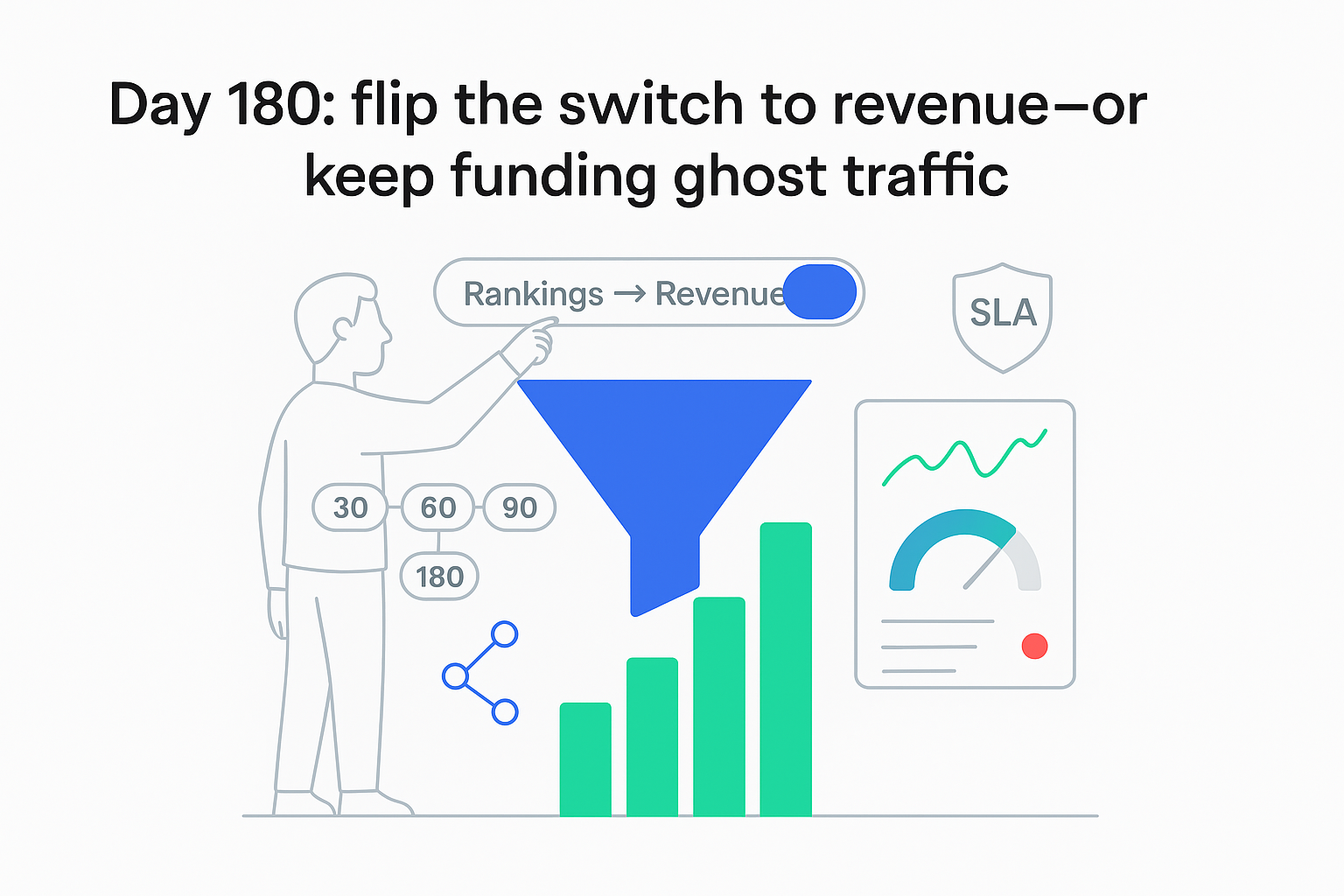

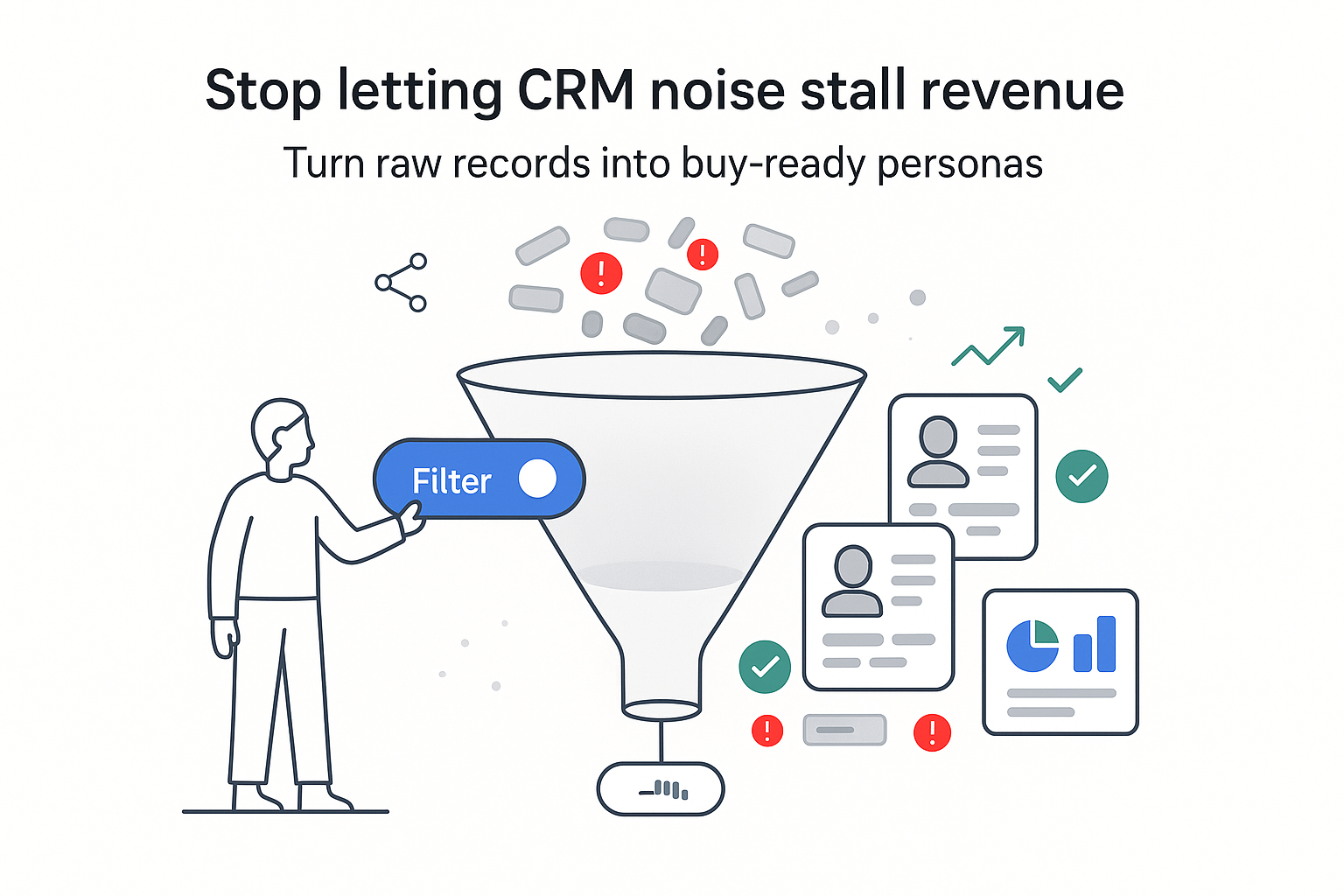
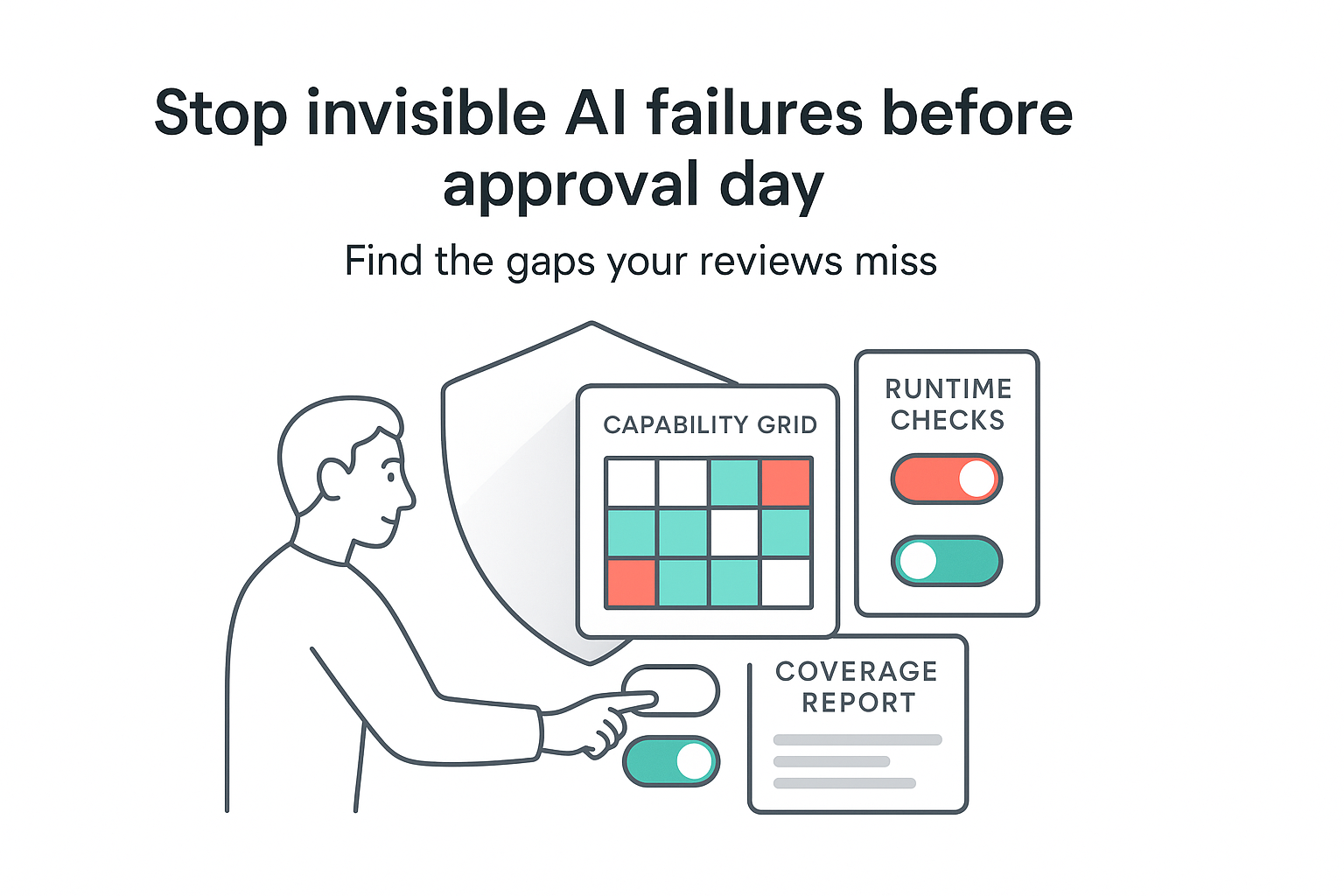
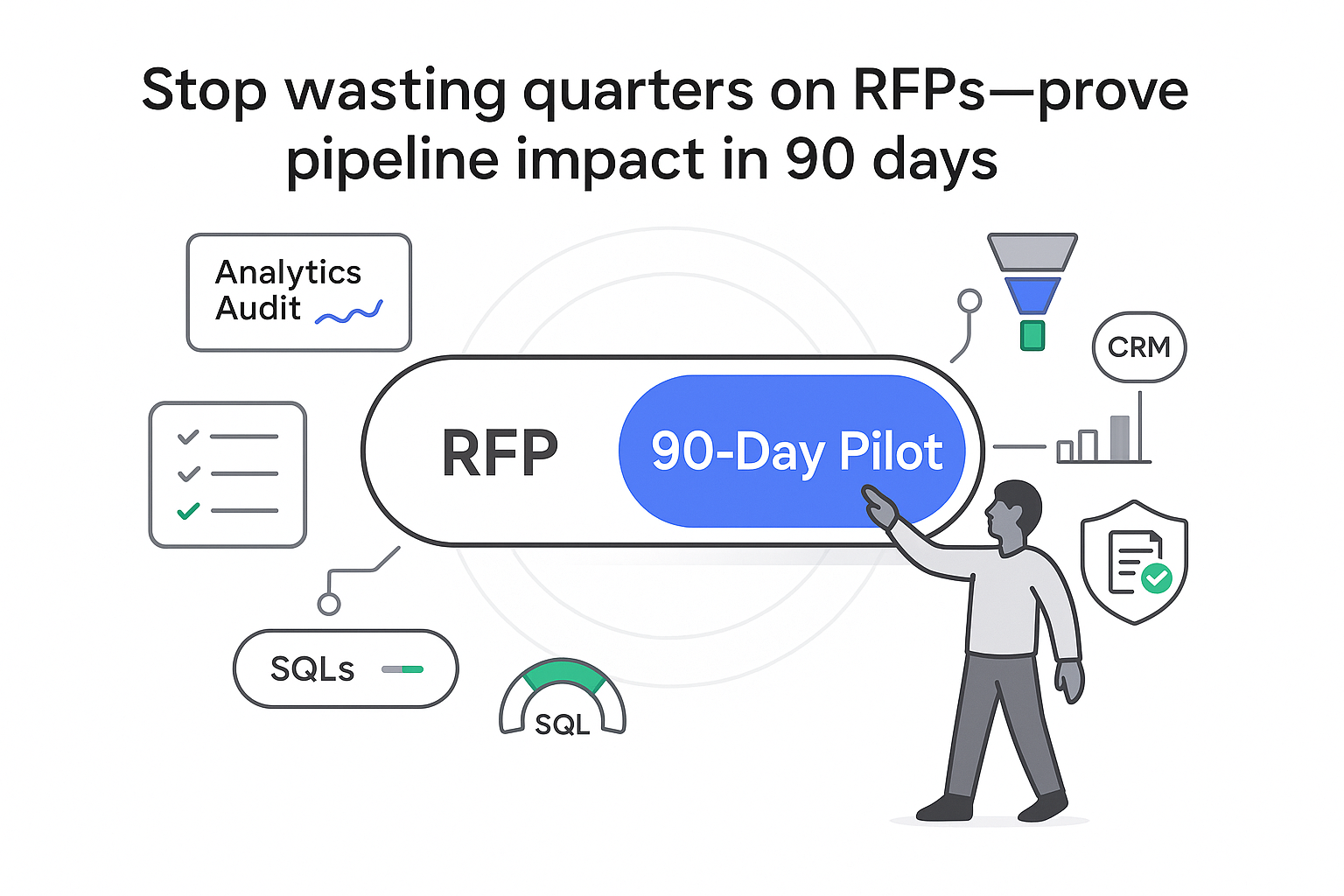
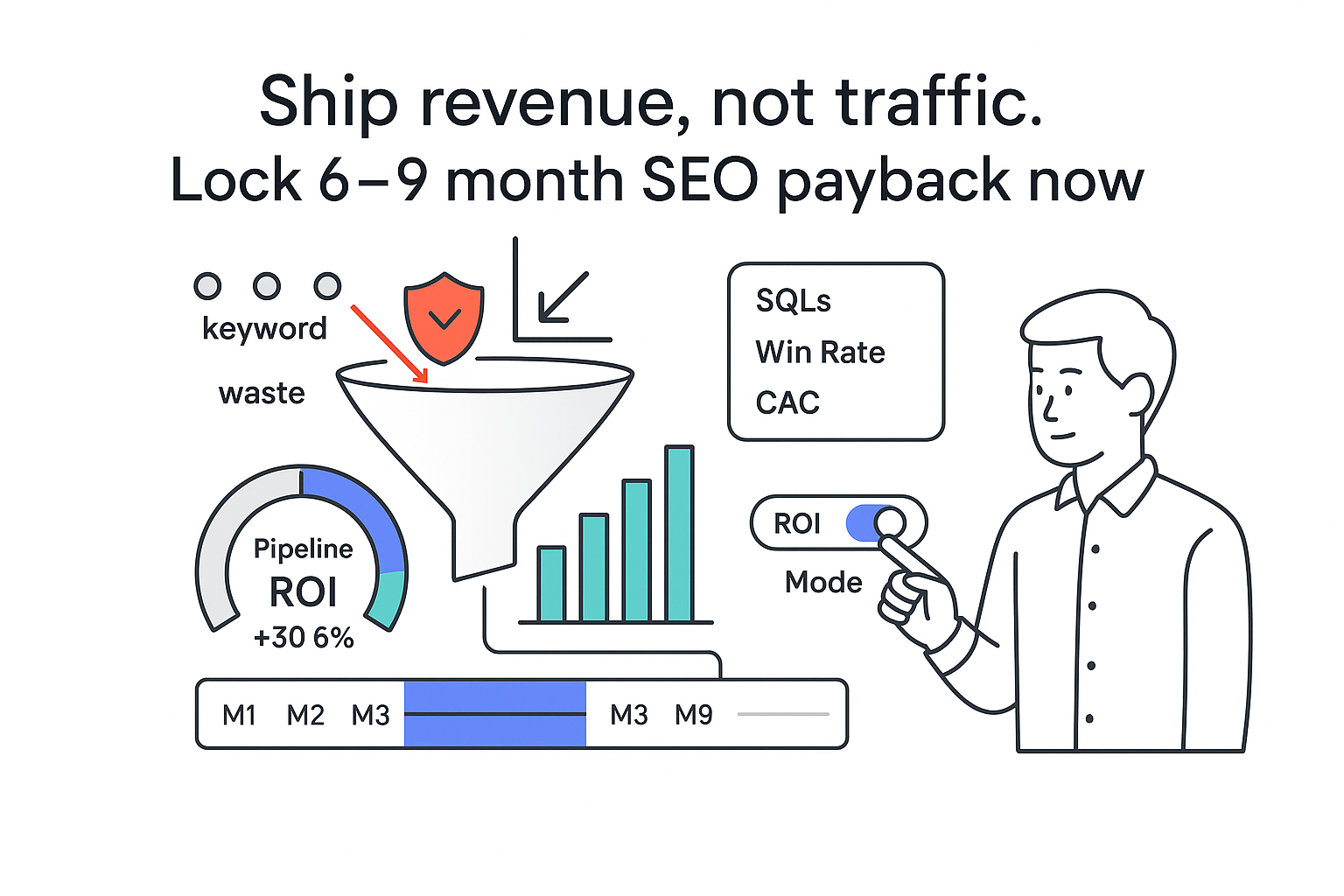
.svg)